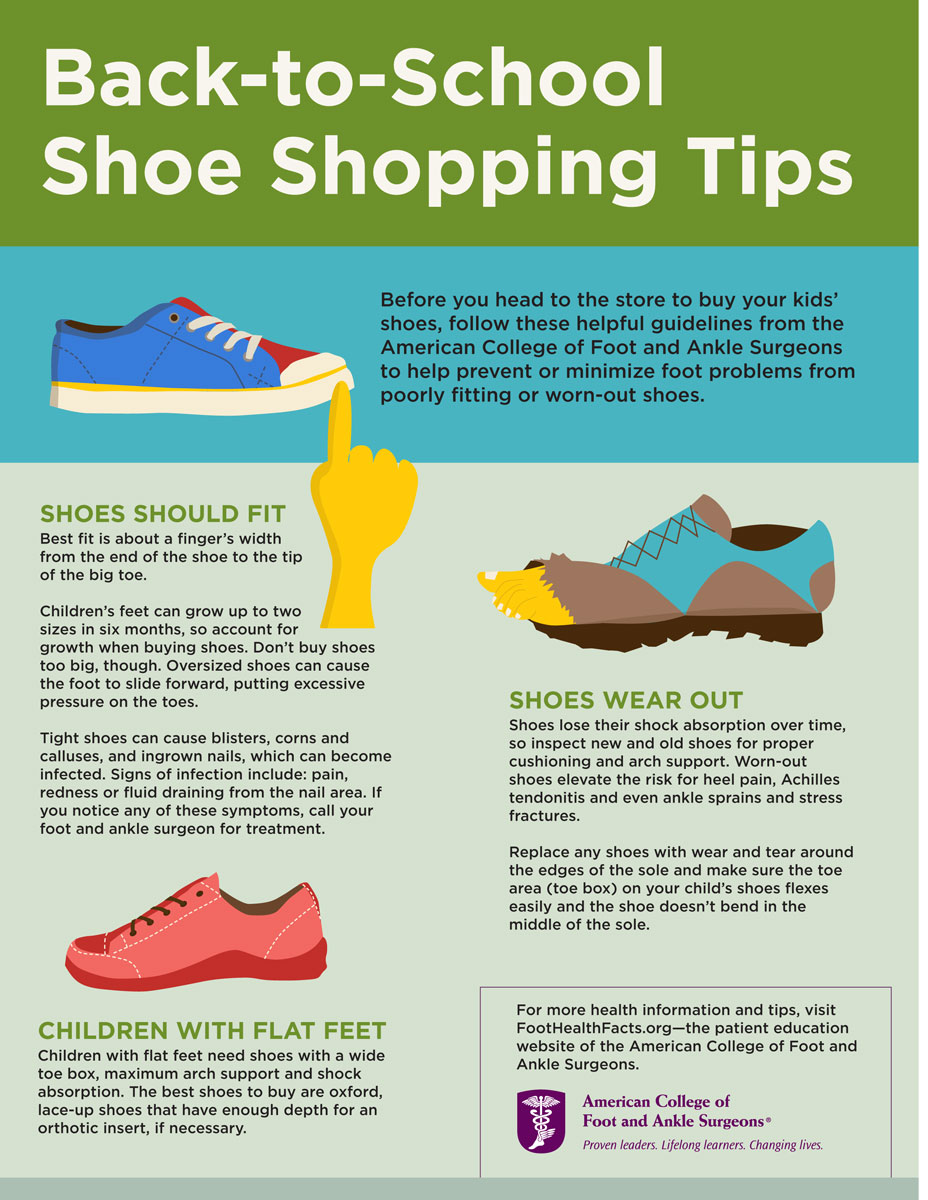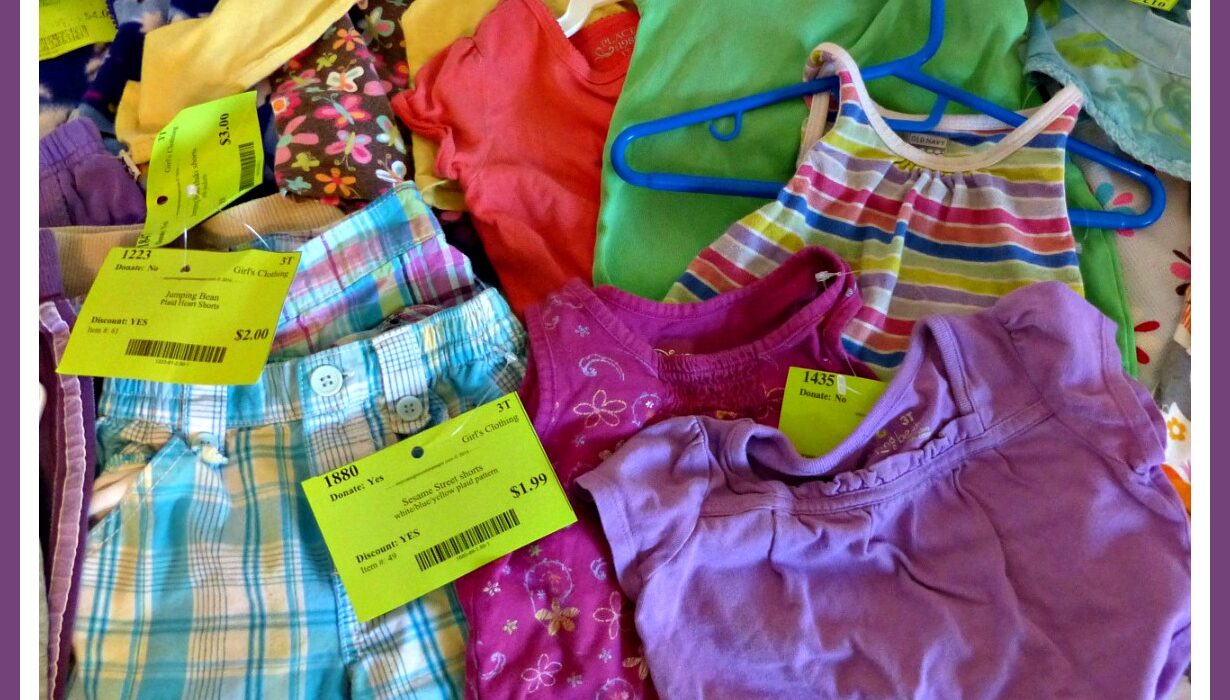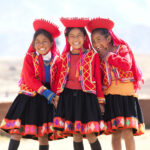Buying old clothes for children can be a smart choice. It saves money and is good for the environment.
But is it really safe? Many parents wonder about the safety of used clothing. They think about germs, allergens, and wear and tear. While buying second-hand clothes can be a great way to find unique items, certain precautions are important.
Cleaning and inspecting clothes thoroughly can help ensure they are safe for your child. In this blog post, we will explore the safety of buying old clothes for children. We will provide helpful tips for buyers to make smart choices. Let’s dive into how to shop wisely and safely for your little ones!
Table of Contents
The Rise Of Secondhand Shopping For Kids
Buying secondhand clothes for children is becoming popular. More parents are choosing this option. It offers many benefits. From saving money to helping the environment, secondhand shopping is a smart choice.
Environmental And Economic Benefits
Secondhand shopping helps the planet. It reduces waste and saves resources. Here are some key points:
- Less clothing in landfills.
- Fewer new clothes mean less water and energy used.
- Buying secondhand saves money.
Parents can find quality clothes at lower prices. This makes it easier to dress growing kids. Here’s a quick comparison:
| New Clothes | Secondhand Clothes |
|---|---|
| Higher prices | More affordable |
| Limited options | Unique finds |
| Environmental impact | Less waste |
Growing Popularity Among Parents
Many parents now prefer secondhand clothes. This trend is growing for several reasons:
- Quality: Many used clothes are in great condition.
- Style: Parents can find unique styles.
- Community: Buying secondhand supports local businesses.
Social media also plays a role. Parents share tips and finds online. This creates a community around secondhand shopping. More families are embracing this choice.
Safety Concerns With Pre-owned Kidswear
Buying old clothes for children can save money. Yet, safety must come first. Pre-owned kidswear may carry risks. Understanding these risks helps you make informed choices. Here are some important points to consider.
Potential Risks And Contaminants
Old clothes can harbor hidden dangers. Here are some common risks:
- Stains and Odors: Old clothes can have stains. They may also carry unpleasant smells.
- Contaminants: Dust mites and bacteria can linger in used clothes.
- Insect Infestations: Clothes can hide pests like bedbugs or moths.
Check the items carefully. Look for any signs of damage or wear. Clean clothes thoroughly before wearing them.
Allergies And Skin Sensitivities
Children often have sensitive skin. Old clothes may trigger allergies. Here are some factors to consider:
- Fabric: Some materials can cause irritation.
- Detergents: Previous owners might use harsh detergents.
- Perfumes: Strong smells can irritate sensitive skin.
Always wash pre-owned clothes before use. Use a gentle detergent to avoid reactions. Monitor your child for any signs of discomfort.
Inspecting Used Clothes: What To Look For
Buying used clothes for children can save money. Yet, it’s important to inspect them carefully. Knowing what to check helps ensure safety and quality. Here are key areas to focus on.
Checking For Wear And Tear
Start by examining the fabric closely. Look for signs of wear and tear. This includes:
- Frayed edges: Check hems and seams.
- Pilling: Look for small balls of fabric.
- Faded colors: Bright colors should be vibrant.
- Stains: Check for permanent spots.
Inspect zippers and buttons. Ensure they work smoothly. Missing parts can make clothes unusable. Pay attention to the lining as well. A damaged lining can indicate poor quality.
Identifying Signs Of Poor Maintenance
Clothes should be clean and well cared for. Check for these signs:
- Odor: Musty smells can indicate mold.
- Excessive wrinkles: These may show neglect.
- Discoloration: Look for uneven color patches.
Read care labels. Ensure the fabric is easy to clean. Some fabrics require special care. Look for any signs of repairs. Stitches should be neat and secure.
By focusing on these aspects, you can find quality used clothes. This helps ensure your child’s safety and comfort.
Hygiene Practices For Secondhand Clothing
Buying secondhand clothes for children is a smart choice. It saves money and promotes recycling. However, hygiene is important. Ensuring cleanliness helps protect your child from germs and allergens. Here are some useful hygiene practices for secondhand clothing.
Cleaning And Sanitization Methods
Before dressing your child in secondhand clothes, proper cleaning is essential. Follow these steps:
- Wash with hot water: Use hot water to kill germs.
- Use detergent: Choose a strong detergent for effective cleaning.
- Add vinegar: White vinegar helps remove odors and disinfect.
- Dry thoroughly: Sunlight can help eliminate remaining germs.
Some items may require special care:
- Dry clean: Consider dry cleaning delicate fabrics.
- Steam clean: Steaming can kill dust mites and allergens.
Tips For Allergy-proofing
Children with allergies need extra care. Here are tips to help:
- Check labels: Look for materials that are hypoallergenic.
- Avoid certain fabrics: Steer clear of wool or synthetic blends.
- Wash new items: Always wash secondhand clothes before use.
- Store properly: Keep clothes in a clean, dry place to prevent mold.
Be mindful of your child’s specific allergies. Consider consulting a doctor for personalized advice.
The Importance Of Quality In Secondhand Clothes
Buying secondhand clothes for children can be smart and economical. Quality matters most. Quality ensures safety, comfort, and durability. Parents should focus on well-made items. This helps avoid frequent replacements. Let’s explore why quality is key.
Durable Materials And Brands
Choosing durable materials is essential. Look for clothing made from:
- Cotton
- Wool
- Denim
- Polyester blends
These materials last longer and withstand wear. Some brands are known for their quality. Consider these trusted brands:
| Brand | Notable Features |
|---|---|
| Hanna Andersson | Soft, durable fabrics |
| Gap Kids | Stylish, long-lasting options |
| Carters | Comfort and affordability |
These brands prioritize quality. They provide good value for your money.
Longevity Of Pre-owned Garments
Consider the lifespan of secondhand items. Well-made clothes last longer. Check for signs of wear:
- Look for frayed edges.
- Check for faded colors.
- Inspect for missing buttons or broken zippers.
Quality garments can be reused for siblings or friends. This reduces waste. Investing in quality means fewer trips to the store.
Buying secondhand is not just eco-friendly. It also supports sustainable fashion. Quality ensures your child wears safe and comfortable clothing.
Where To Buy: Trusted Sources For Used Kids’ Clothes
Buying used clothes for children can save money and be eco-friendly. Knowing where to shop is important. Here are some reliable sources for finding quality pre-owned kids’ clothing.
Online Marketplaces Vs. Local Thrift Stores
Both online marketplaces and local thrift stores have their benefits. Consider these points:
| Feature | Online Marketplaces | Local Thrift Stores |
|---|---|---|
| Convenience | Shop from home anytime | Visit in person |
| Variety | Large selection available | Limited to store inventory |
| Condition | Condition varies widely | Usually inspected before sale |
| Pricing | Prices can vary | Often cheaper |
Online marketplaces offer a wide range. You can browse many sellers. Local thrift stores provide a personal touch. You can inspect items directly.
Reputation And Reviews Of Sellers
Check seller reputation before purchasing. Look for these signs:
- Positive Feedback: High ratings from previous buyers.
- Detailed Descriptions: Clear and honest item descriptions.
- Return Policy: Flexible policies in case items do not fit.
Read reviews carefully. They reveal a seller’s reliability. Trustworthy sellers ensure quality items. Do not rush; take your time to find the best options.
The Role Of Size And Fit In Choosing Pre-loved Clothes
Finding the right size and fit is crucial for children’s clothing. Pre-loved clothes can be a great option. However, sizing can vary between brands. Understanding the size and fit helps ensure comfort and usability.
Understanding Children’s Sizing
Children grow quickly. Sizing can change often. Here are some key points to remember:
- Age vs. Size: Age labels may not match actual size.
- Brand Differences: Each brand has its own sizing chart.
- Check Measurements: Measure your child and compare with size charts.
Use this simple guide:
| Age | Size | Height (inches) | Weight (lbs) |
|---|---|---|---|
| 0-3 months | Newborn | 19-23 | 5-12 |
| 3-6 months | 3M | 23-26 | 12-16 |
| 6-12 months | 6M | 26-30 | 16-22 |
| 1-2 years | 12M | 30-34 | 22-28 |
Adjustments And Alterations
Sometimes, pre-loved clothes need some adjustments. This can help improve fit and comfort.
- Simple Hemming: Shorten sleeves or pants easily.
- Taking in Seams: Adjust the width for a snug fit.
- Adding Stretch: Use elastic bands for a better fit.
Consider these tips for alterations:
- Choose clothes that are slightly larger.
- Look for items with simple designs for easy adjustments.
- Check for fabric that is easy to alter.
Buying pre-loved clothes can be safe and smart. Focus on size and fit for the best experience.

Credit: www.foothealthfacts.org
Avoiding Outdated And Recalled Children’s Clothing
Buying old clothes for children can be a great way to save money. However, safety must come first. Outdated and recalled clothing can pose risks. Here are important tips to ensure your child’s safety.
Staying Informed About Recalls
Clothing recalls happen often. They can include items with dangerous materials or design flaws. Stay updated to keep your child safe.
- Check the Consumer Product Safety Commission (CPSC) website.
- Subscribe to recall alerts from trusted sources.
- Follow brands on social media for immediate updates.
Before buying, research the brand. Look for any past recalls. Avoid brands with a history of safety issues.
The Dangers Of Obsolete Safety Standards
Old clothing may not meet current safety standards. Standards evolve to protect children better. Clothing made years ago might lack crucial safety features.
| Safety Feature | Current Standard | Old Standard |
|---|---|---|
| Flammability | Low flammability for sleepwear | Higher flammability levels |
| Small Parts | Must be larger than 1.25 inches | No strict size requirement |
| Drawstrings | No drawstrings in hoods | Drawstrings allowed |
Check labels for safety certifications. Look for tags that state compliance with modern safety rules. Buying newer items ensures better safety for your child.
The Ethical Dimension Of Buying Used Children’s Clothes
Buying used children’s clothes has many ethical benefits. It supports sustainable practices. This choice helps the environment and promotes responsible consumer habits. Understanding these points can guide your shopping decisions.
Supporting Sustainable Fashion
Choosing second-hand clothes is a step towards sustainable fashion. It reduces waste. Here are some key benefits:
- Less Waste: Textiles contribute to landfills. Buying used clothes keeps them out.
- Resource Conservation: Less demand means fewer new clothes are made.
- Lower Carbon Footprint: The production of new clothing uses energy.
| Benefit | Description |
|---|---|
| Less Waste | Reduces the amount of clothing in landfills. |
| Resource Conservation | Uses fewer natural resources in clothing production. |
| Lower Carbon Footprint | Minimizes energy consumption during production. |
Counteracting Fast Fashion
Fast fashion harms the environment. It promotes overconsumption and waste. By buying used clothes, you can help counteract this trend.
- Reduce demand for cheap, low-quality clothes.
- Support brands focused on sustainability.
- Encourage a circular economy where clothes are reused.
Each purchase of second-hand clothes sends a message. It shows you value quality over quantity. This helps promote a shift away from fast fashion.

Credit: www.cuterascals.com
Cost-benefit Analysis: Saving Money Without Compromising Safety
Buying old clothes for children can be a smart choice. It saves money and offers unique finds. Yet, safety is a primary concern. Understanding the costs involved helps in making informed decisions. This section explores budgeting and hidden costs of cheap clothing.
Budgeting For Children’s Wardrobe
Children grow quickly. Their clothing needs change often. Here are some tips for budgeting:
- Set a monthly budget: Decide how much to spend each month.
- Prioritize essentials: Focus on necessary items like shoes and jackets.
- Mix and match: Choose versatile pieces that can be worn together.
- Shop sales: Look for discounts on quality items.
- Buy in bulk: Purchase basics in larger quantities to save money.
This approach helps keep costs low while ensuring children have what they need.
Hidden Costs Of Cheap Clothing
Cheap clothing can seem like a great deal. However, there are hidden costs:
| Cost Type | Explanation |
|---|---|
| Quality | Poor quality leads to quick wear and tear. |
| Safety | Cheap items may have harmful materials. |
| Time | Frequent replacements waste time and effort. |
| Environmental Impact | Fast fashion contributes to waste and pollution. |
Consider these factors when buying clothes. A low price may not equal a good deal. Investing in quality items can save money in the long run. Prioritize safety over price when selecting children’s clothing.
Maximizing The Life Of Secondhand Children’s Clothes
Buying secondhand clothes for children is smart and economical. These clothes can be just as good as new. With proper care, they can last a long time. Here are some tips to help you maximize their life.
Proper Care And Storage
Taking good care of secondhand clothes is essential. Follow these tips to keep them looking great:
- Wash gently: Use cold water and mild detergent.
- Avoid bleach: It can damage fabric.
- Dry properly: Air dry when possible to prevent shrinkage.
- Store correctly: Keep clothes in a cool, dry place.
Organizing clothes helps maintain their quality:
- Sort by size.
- Use breathable storage bins.
- Keep seasonal clothes separate.
Mending And Upcycling
Sometimes, secondhand clothes need a little help. Mending can extend their life:
- Patch holes: Use fabric patches for a fun touch.
- Sew loose buttons: This keeps clothes usable.
- Fix hems: Shorten pants or dresses as needed.
Upcycling is a creative way to give clothes a new life:
- Turn old shirts into tote bags.
- Make quilts from fabric scraps.
- Transform dresses into skirts.
These tips help keep secondhand children’s clothes in great shape. Enjoy saving money while being eco-friendly!
Navigating Safety Standards And Certifications
Buying old clothes for children can be safe. Understanding safety standards helps. Certifications show that clothes meet safety rules. This guide covers key points on safety.
Recognizing Certified Safe Clothing
Look for labels on clothing. These labels show safety certifications. Common certifications include:
- Oeko-Tex Standard 100: Tests for harmful substances.
- GOTS (Global Organic Textile Standard): Ensures organic materials are used.
- ASTM (American Society for Testing and Materials): Sets safety standards for children’s clothing.
Certified clothing is tested for safety. It is less likely to cause allergies or irritations. Always check for these labels before buying.
International Vs. Local Safety Standards
Different countries have different safety standards. Some international standards are widely recognized. Local standards may focus on specific safety issues.
| Country | International Standard | Local Standard |
|---|---|---|
| USA | ASTM F963 | CPSC (Consumer Product Safety Commission) |
| Europe | EN 71 | Local EU member standards |
| Canada | CAN/CGSB 4.2 | Local provincial regulations |
Know the standards in your area. This helps ensure the safety of clothes you buy. Always choose clothes that meet the highest standards.
Final Thoughts: Balancing Safety And Savings
Buying old clothes for children can save money. But safety is essential. Finding the right balance is crucial. Here are some tips to help you.
Making Informed Decisions
Before buying used clothes, consider these points:
- Check for stains and damage: Look closely at the fabric. Small stains can be cleaned, but large ones may not come out.
- Inspect for safety hazards: Look for loose buttons, broken zippers, or sharp edges. These can be dangerous for children.
- Know the brand: Some brands focus on safety and quality. Research reputable brands known for their standards.
- Ask about previous ownership: Find out how the clothes were stored and cared for. This can impact their safety and cleanliness.
By following these tips, you can make better choices. Safety and quality should never be compromised.
Creating A Sustainable Wardrobe For Your Child
Buying second-hand clothes also helps the environment. Here are some benefits:
| Benefit | Description |
|---|---|
| Reduces Waste | Less clothing ends up in landfills. |
| Conserves Resources | Fewer resources are used for new clothes. |
| Encourages Creativity | Mix and match unique pieces for a fun style. |
Building a sustainable wardrobe is easy. Consider these ideas:
- Visit local thrift shops or online marketplaces.
- Organize clothing swaps with friends or family.
- Teach your child about the value of reusing clothes.
Choosing old clothes can be smart. It saves money and helps the planet. Just remember to prioritize safety for your child.
Frequently Asked Questions
Is It Okay To Buy Used Clothes For Kids?
Buying used clothes for kids is generally safe. Just check for cleanliness and good condition.
What Should I Look For In Secondhand Children’s Clothes?
Look for fabric quality, missing buttons, and any stains. Ensure items are safe and free from hazards.
How Can I Clean Old Clothes Before Use?
Wash secondhand clothes in hot water and detergent. This helps remove germs and odors.
Are Old Clothes Harmful To Children?
Old clothes can be safe if clean and in good shape. Always inspect them before use.
Conclusion
Buying old clothes for children can be safe and smart. Check the items carefully before buying. Look for stains, tears, or damage. Clean them properly to ensure safety. Consider the brand and materials used in the clothes. Eco-friendly choices can be better for your child.
Buying second-hand saves money and helps the environment. With a bit of care, you can find great deals. Enjoy the process of finding unique and stylish outfits for your kids. Make informed choices to keep your children safe and stylish.
Happy shopping!







